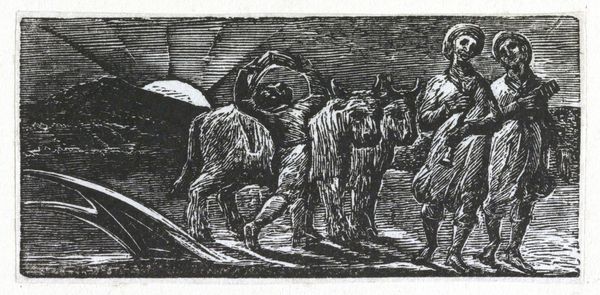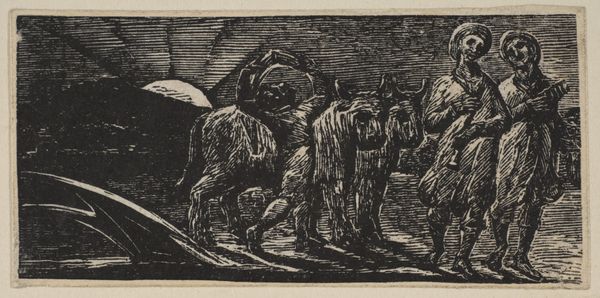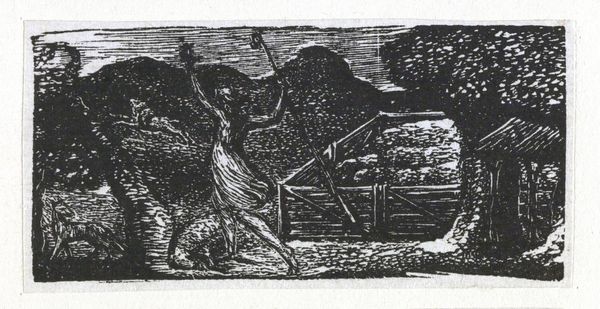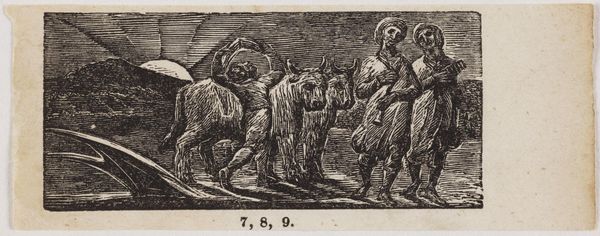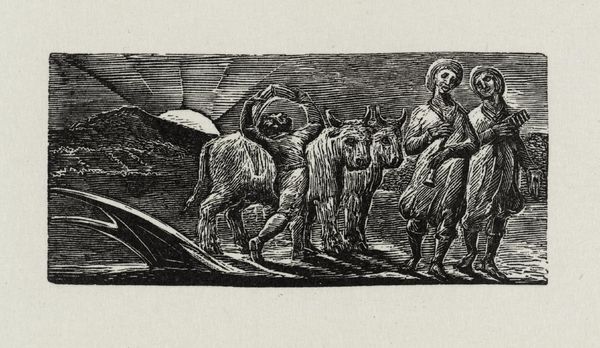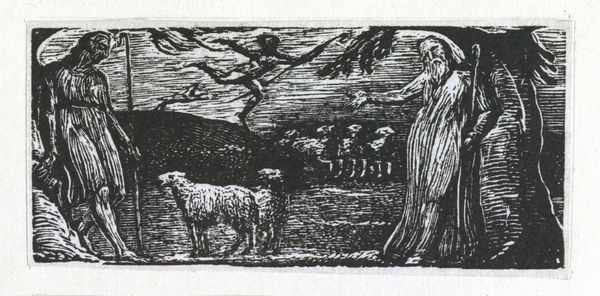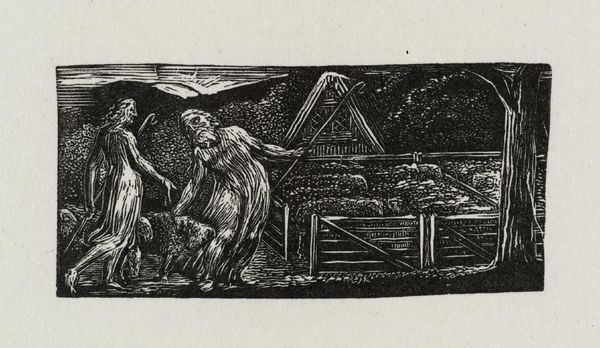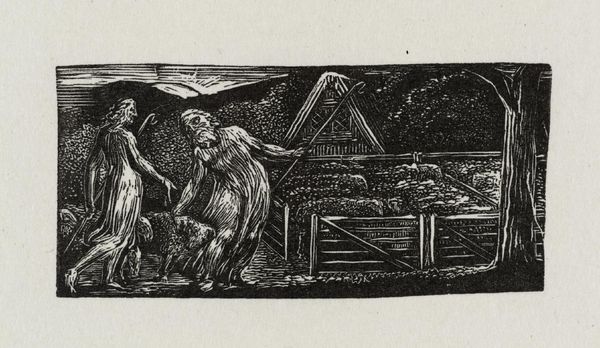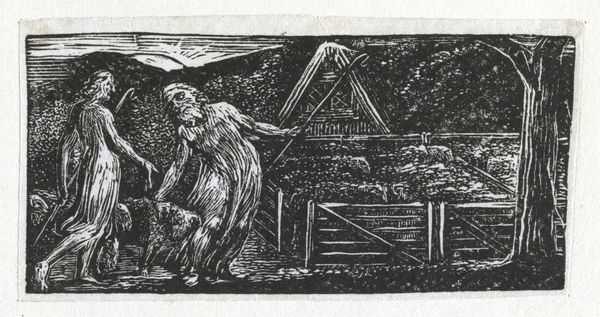
Dimensions: image: 35 x 75 mm
Copyright: NaN
Curator: This is William Blake's ‘With Songs the Jovial Hinds Return from Plow’. Editor: It feels stark, the figures looming out of the darkness of the print, yet there's a serenity in their stride. Curator: Blake, born in 1757, was deeply concerned with the social and political landscape of his time, particularly the plight of the working class. Editor: The woodcut emphasizes the labor – see how the plowman strains, yet there's also dignity in the repetitive, cyclical work. Curator: Absolutely, we can interpret this image as part of Blake's larger critique of oppressive systems, a vision of labour before industrial alienation. Editor: It's powerful to consider the materiality itself—the carved wood mirroring the earth being tilled—even in this small scale. Curator: Thinking about Blake's context, it’s hard not to consider how his radicalism shaped the representation of labor here. Editor: Yes, and how the very act of carving these figures into wood honors their labor. I leave with a renewed appreciation for the earth's bounty.
Comments
tate 8 months ago
⋮
http://www.tate.org.uk/art/artworks/blake-with-songs-the-jovial-hinds-return-from-plow-a00126
Join the conversation
Join millions of artists and users on Artera today and experience the ultimate creative platform.
tate 8 months ago
⋮
Samuel Palmer was the most important of Blake’s followers, known as the Ancients. Palmer first met Blake in 1824. He described these illustrations to an imitation of the First Eclogue by the Roman poet Virgil as ‘visions of little dells, and nooks, and corners of Paradise’. Palmer’s art was particularly influenced by them. These prints appealed to the Ancients because they were the result of Blake’s experiments with a new medium; he had never engraved on wood before. Even at the age of sixty-four he wanted to make further explorations in his art. Gallery label, August 2004
